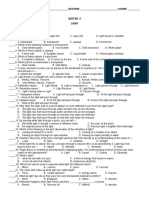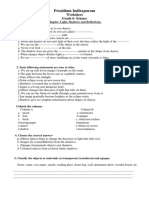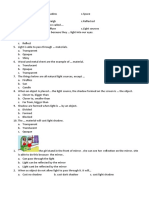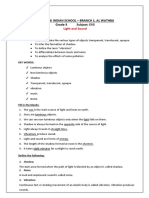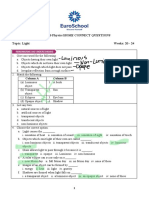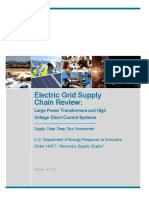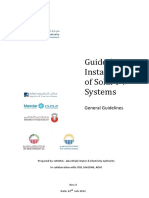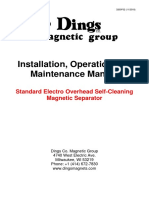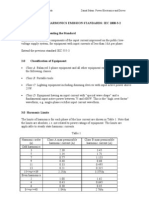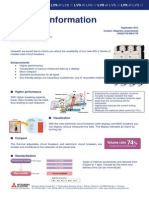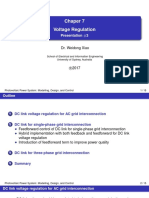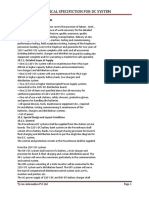0% found this document useful (0 votes)
37 views5 pagesScience Revision
The document contains questions about light, properties of light, luminous and non-luminous objects, the formation of rainbows, the electromagnetic spectrum, and conductors and insulators. Light travels at a high speed, and its properties include that it can be reflected, refracted, and absorbed. Shadows are formed when light from a source is blocked by an opaque object. Conductors are materials that allow the flow of electric current, while insulators do not conduct electricity well.
Uploaded by
Damiete GeorgewillCopyright
© © All Rights Reserved
We take content rights seriously. If you suspect this is your content, claim it here.
Available Formats
Download as DOCX, PDF, TXT or read online on Scribd
0% found this document useful (0 votes)
37 views5 pagesScience Revision
The document contains questions about light, properties of light, luminous and non-luminous objects, the formation of rainbows, the electromagnetic spectrum, and conductors and insulators. Light travels at a high speed, and its properties include that it can be reflected, refracted, and absorbed. Shadows are formed when light from a source is blocked by an opaque object. Conductors are materials that allow the flow of electric current, while insulators do not conduct electricity well.
Uploaded by
Damiete GeorgewillCopyright
© © All Rights Reserved
We take content rights seriously. If you suspect this is your content, claim it here.
Available Formats
Download as DOCX, PDF, TXT or read online on Scribd
/ 5

